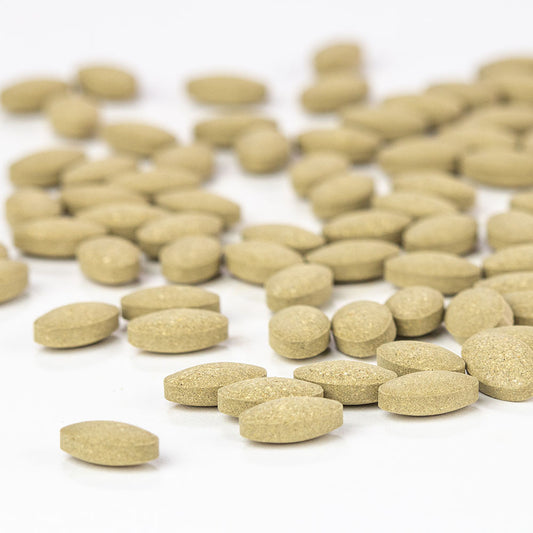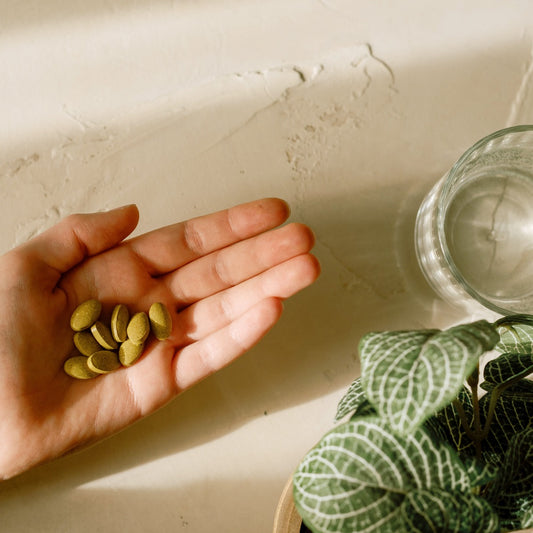I'll never forget my first nasya treatment almost a decade ago. I was blown away by the instant results from putting a few drops of oil in each nostril.
It was a hot, smoggy, summer day in Los Angeles, and the palm trees were dancing to the dry Santa Ana winds. While the trees were swinging, I was aching from dry sinus pressure, a headache, and sensitive eyes.
Fortunately, it was the same day I was taking an Ayurveda treatment course where I was the perfect “guinea pig” for the nasya demonstration. After receiving a few drops of slightly warm herbal oil followed by a couple sneezes, I felt relief from the dull lingering pressure.
My neck was less sore, my eyes opened wider, and the headache pretty much disappeared. Since this experience, Nasya Oil has been a staple in my first aid cabinet and an essential part of my daily routine.
According to Ayurveda, the sinus cavity is the gateway to the brain, mind, and consciousness. To address imbalances related to memory, the emotions, thoughts, and imbalances above the clavicle bone, treatments like nasya are often administered.
Nasya, the practice of lubricating the nasal cavities and sinuses by gently placing a few drops of herbal or non-herbal oil into each nostril, can be self-administered or given by an Ayurvedic practitioner. It can aid with mental and emotional stress, as well as tension in the head, throat, neck, jaw, and shoulders.

The Subtle Effects of Nasya
Nasya also offers support for imbalances related to prana vayu, sadhaka pitta, and tarpaka kapha—the three sub-doshas that govern inhalation, processing emotions, and lubrication.
Prana Vayu
When prana vayu is out of balance, a person may experience anxiousness, sleepless nights, inability to concentrate, and neurological disorders. Prana vayu is located in the cranial cavity. It moves downward and inward in the head and is responsible for inhalation and the movement of the mind, which includes our perception, sensations, feelings, thoughts, and emotions.
How prana vayu flows is determined by our thoughts and it plays a role in our emotional response. If the mind has excess movement, is unstable, or there is excess dryness in the body, it can disturb the nervous system. This can impact how we breathe and, in turn, affect the flow of prana throughout our body.
Sadhaka Pitta
Sadhaka pitta is considered the caretaker of the heart and the seat of consciousness, and resides in the brain and the heart. This sub-dosha is responsible for knowledge, understanding, and comprehension. It helps to intellectually process our thoughts, feelings, and emotions by transforming and digesting them to help prevent emotional blocks.
Through the heart, it fosters compassion, understanding, and sharing the manifestations of love. When out of balance, there could be challenges with digesting thoughts and emotions, the ability to discern, overwhelming fear, anger, attachment, and difficulties related to memory.
Tarpaka Kapha
Tarpaka kapha nourishes the brain, where it is predominantly present in the white matter. It is also present in the cerebrospinal fluid which surrounds the soft brain tissue and the spinal cord. For the nerve cells, tarpaka kapha provides nourishment and fosters contentment. It is also a protective layer that lubricates the sinuses and nasal cavity.
With its ability to retain and record, tarpaka kapha holds on to memories that can either protect us or, when out of balance, they can crystallize, making it challenging to shift thoughts, transform emotions, or change old patterns.
When out of balance, tarpaka kapha holds on to negative memories, fosters stagnation, creates congestion and dry sinuses, dulls the sense of smell, and can lead to memory loss, lethargy, sadness, and emotional instability.
All three of these sub-doshas work synergistically and are important to the function of the brain. Though they work individually, they are also highly interconnected and when one is out of balance, the other two could be impacted and vice versa.
For example, if there is sinus congestion from excess kapha, it could hinder the flow of prana, possibly causing stiffness or pain in the neck, head, and face. This can impact our ability to concentrate or discern our thoughts, and create frustration stemming from the inability to breathe, smell, or even sleep.
An herbal-based nasya treatment offers support by quickly reaching the brain, mind, and consciousness, where these sub-doshas reside. Nasya Oil provides nourishment and balance by bringing beneficial herbs and oil to lubricate, cleanse, and open the nasal passages. By alleviating stress, releasing tension, and clearing stagnation, breathing becomes easier, and prana flows freely. Plus, it feels good!
Types of Nasya Oil
Nasya Oil
Banyan's signature Nasya Oil is crafted according to traditional Ayurvedic methods, harnessing the power of soothing sesame and olive oils, along with clarifying herbs like calamus, gotu kola, and eucalyptus. Balancing for all doshas, it helps maintain balance and awareness in the mind, freedom in the breath, and vitality in the body.
Super Nasya Oil
Formulated by renowned Ayurvedic physician Vasant Lad, Super Nasya Oil has an especially awakening and refreshing quality that makes it ideal for times of cleansing. With a nourishing base of sesame and sunflower oils, it features a potent eucalyptus scent that helps to clear the mind and may help relieve occasional congestion. Simultaneously, rose and sandalwood bring a soothing quality that supports emotional well-being.
Choose the nasya oil that calls to you, or keep both on hand for your various needs with the Nasya Oil Bundle.
5 Reasons to Use Nasya Oil
- Using oil in the nose lubricates the nasal cavity and sinuses, offering protection from the recycled air, and creating a barrier against pollen and environmental pollutants.
- Nasya fosters deep inhalation by opening up the nasal passage, allowing prana to flow, aiding in relaxation, releasing stress, and preventing blocked energy.
- Practicing nasya clears stagnation from dry accumulated mucous and relieves congestion, opening up the nasal passages, sharpening the sense of smell, and reactivating breathing through the nose.
- Because the nose serves as the gateway to the head, keeping the nasal passages well hydrated promotes mental clarity, sharpens the memory, and aids in creating emotional stability.
- Regular application of nasya oil relieves dryness, nourishes the nervous system, eases tension in the head, neck, throat, and jaw, and fosters calming, stable energy.
Please note: Avoid nasya when pregnant, feeling ill, or experiencing a sinus infection, and immediately after using a neti pot for nasal rinsing.
While nasya and neti offer many similar benefits, their effects are very different. Just as oil and water do not mix, these practices can create disharmony by introducing opposing energies into the nasal cavity and, by extension, the mind.
It is largely for this reason that we advise allowing some time to pass between these practices. Also, it is important to ensure the full drainage of saline after using your neti pot, so we recommend waiting at least a day before using Nasya Oil.









